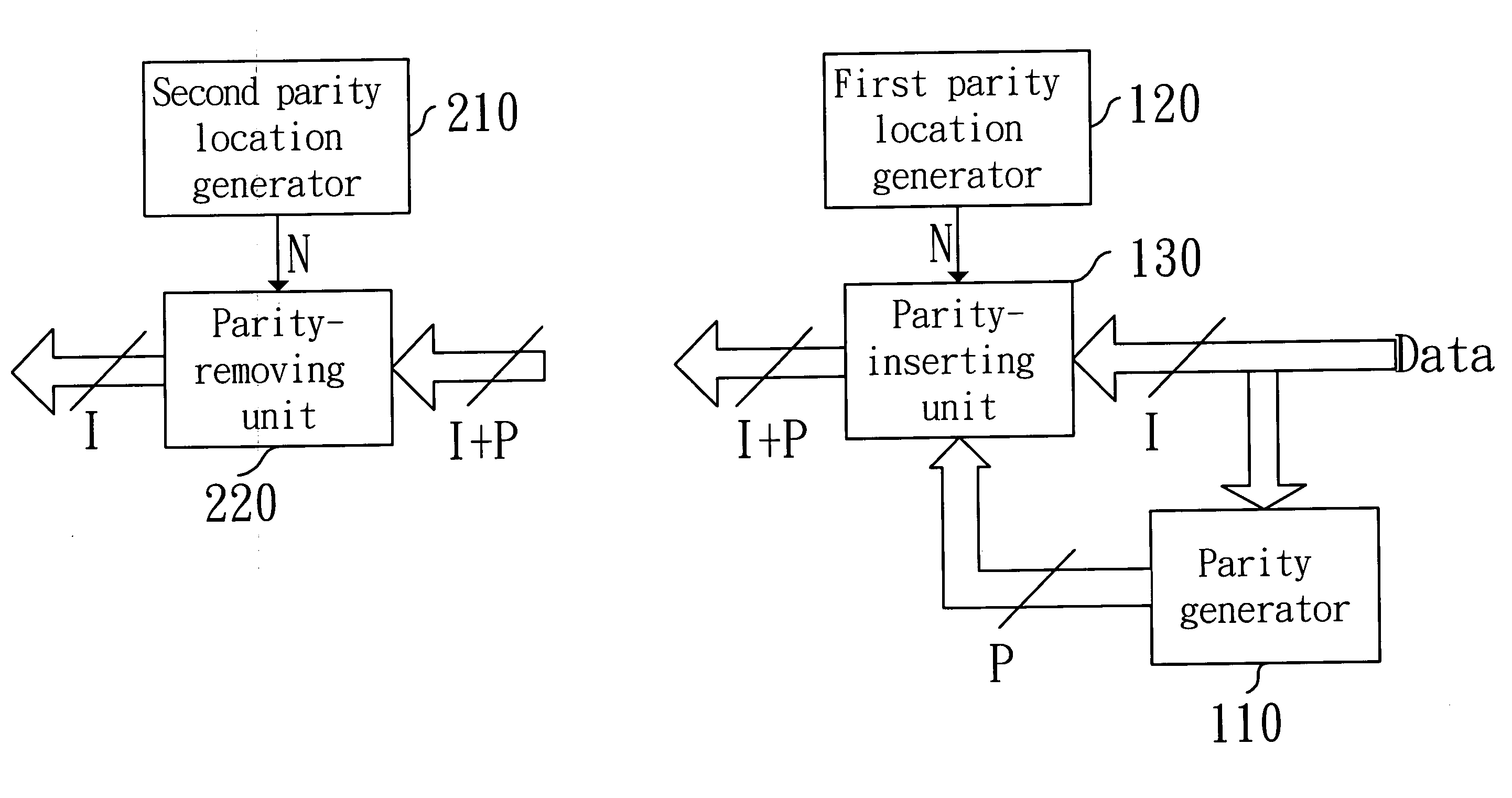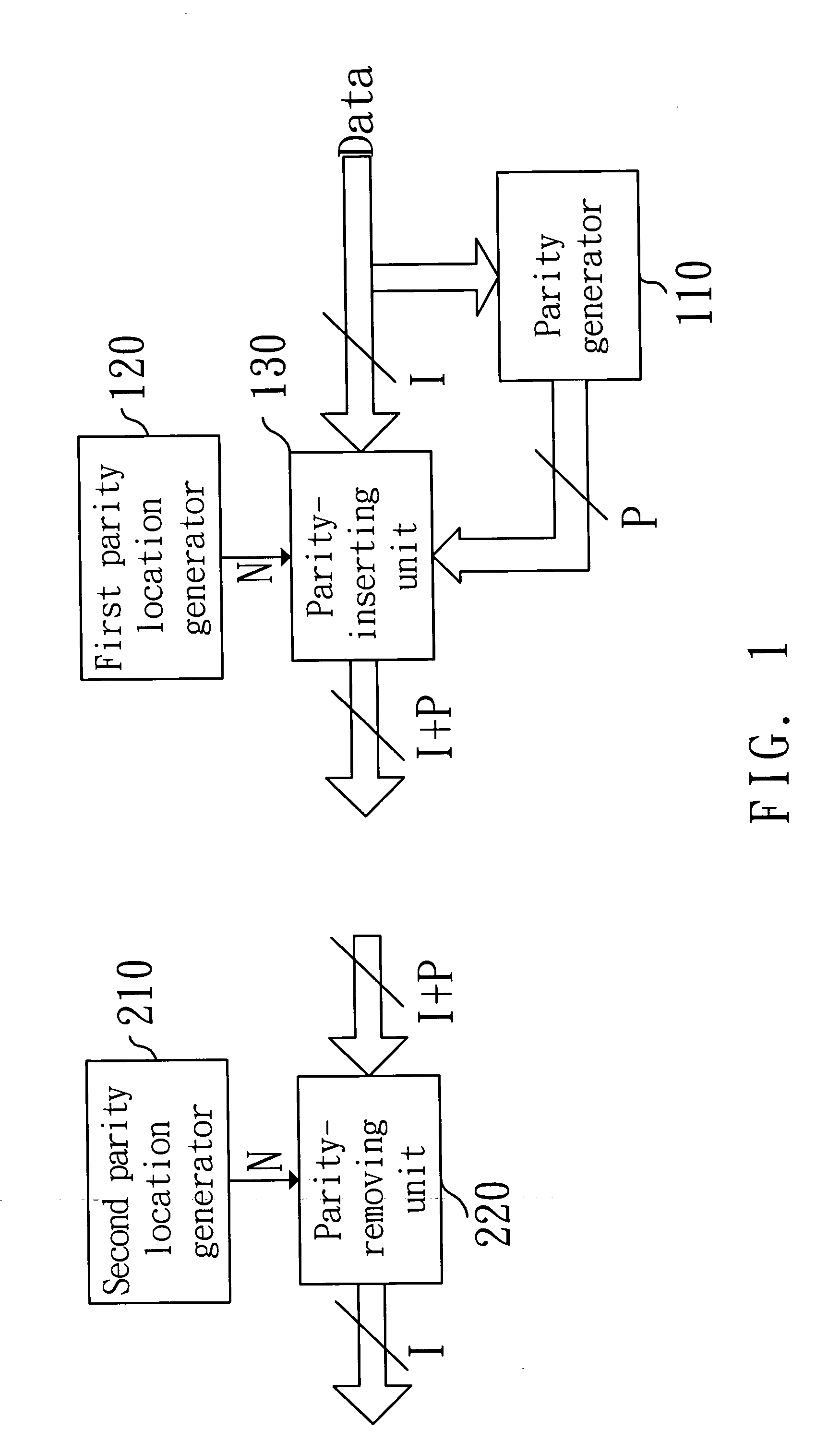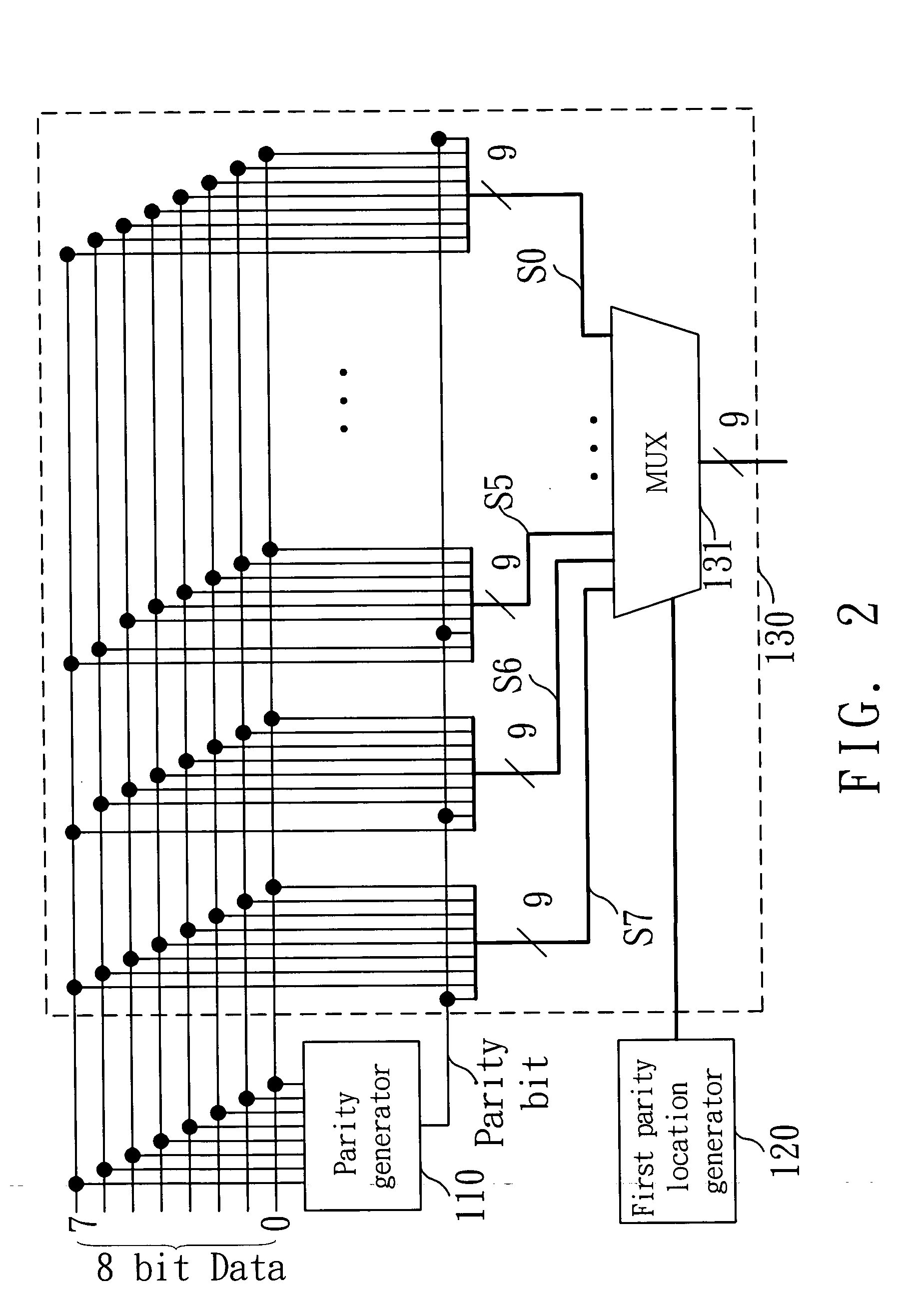Device and method of applying a parity to encrypt data for protection
- Summary
- Abstract
- Description
- Claims
- Application Information
AI Technical Summary
Benefits of technology
Problems solved by technology
Method used
Image
Examples
Embodiment Construction
[0018]FIG. 1 is a block diagram of a device of applying a parity to encrypt data for protection in accordance with the invention. In FIG. 1, the device includes: a parity generator 110, a first parity location generator 120, a parity-inserting unit 130, a second parity location generator 210 and a parity-removing unit 220. As shown in FIG. 1, the parity generator 110, the first parity location generator 120 and the parity-inserting unit 130 encrypt data to be outputted. In addition, the second parity location generator 210 and the parity-removing unit 220 decrypt the data. The parity generator 110 generates P parity bits in accordance with I-bit data to be outputted. For simple description, 8 bits are applied for the I-bit data (I=8) and only one bit is applied for the P parity bit (P=1). The 8-bit data is processed by an XOR gate with eight input terminals and one output terminal, thus the parity is obtained.
[0019] The first parity location generator 120 generates an inserting pos...
PUM
 Login to View More
Login to View More Abstract
Description
Claims
Application Information
 Login to View More
Login to View More - R&D
- Intellectual Property
- Life Sciences
- Materials
- Tech Scout
- Unparalleled Data Quality
- Higher Quality Content
- 60% Fewer Hallucinations
Browse by: Latest US Patents, China's latest patents, Technical Efficacy Thesaurus, Application Domain, Technology Topic, Popular Technical Reports.
© 2025 PatSnap. All rights reserved.Legal|Privacy policy|Modern Slavery Act Transparency Statement|Sitemap|About US| Contact US: help@patsnap.com



